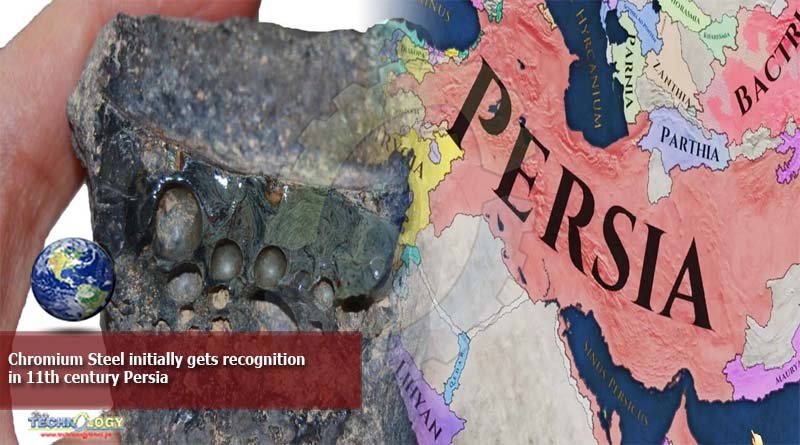Stainless steel is a near-ubiquitous aspect of modern life, with chromium and smaller quantities of other metals providing protection against rust, allowing us to use steel in ways once unimaginable. The basic science behind this is thought to have been discovered around 1800, and first widely applied in the mid-19th Century. However, that belief has run into the cold hard reality of evidence of advanced steel making long before.

An invention that dominated the late-20th Century was made almost 1,000 years earlier, not 100 as most historians imagined. Its loss may be a reflection on the lack of respect post-Renaissance Europe showed to other cultures’ technologies.
Early steel production was more art than science. Consequently, discoveries of traces of chromium in ancient steel weapons and tools have been dismissed as accidents. However, Dr Rahil Alipour of University College London has found evidence that instead the Persians were master steel-makers who for hundreds of years had a very good idea what they were doing.
The evidence for this comes not just from ancient steel but from a manuscript titled al-Jamahir fi Marifah al-Jawahi (‘A Compendium to Know the Gems’) from the 10th or 11th Century by the western calendar. The Compendium includes a recipe for making steel in a crucible, the only such document known to exist from an era when few steel-makers were literate.
The author, Abu-Rayhan Biruni, famous for the breadth of his scholarship, referred to a vital ingredient for steel making. However, the passage of time has meant that modern scholars were unsure what the ingredient Biruni was talking about actually was.
In the Journal of Archaeological Science, Alipour argues Biruni’s secret ingredient was chromite, which as its name suggests is rich in chromium. “Our research provides the first evidence of the deliberate addition of a chromium mineral within steel production,” she said in a statement.
Ancient documents refer to Chahak, Persia, as a center for steel making. Alipour and co-authors found bits of steel left behind in crucible slags found in one of the Iranian villages known as Chahak. These contained 1-2 percent chromium, far less than is used in stainless steel, but enough to provide some resistance to oxidation.
Alipour also translated a 13th-Century manuscript that praised Chahak steel for its beautiful patterns but referred to its swords as brittle. In an era when soldiers’ lives depended on the longevity of their weapons but had ample time to clean them, rust-resistance was less important than hardiness. Nevertheless, if the method had been preserved, it could easily have led to modern steel-making techniques long before they were discovered. Instead, the value of adding chromium to steel needed to be rediscovered from scratch.
Originally published by IFLScience
